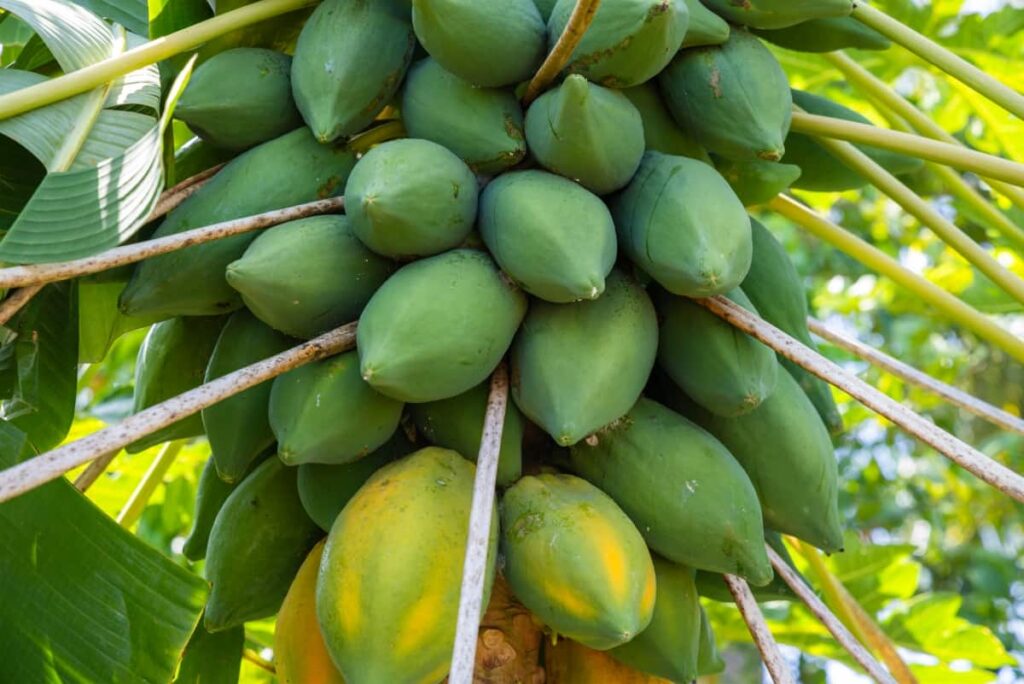- Ce sujet est vide.
- AuteurMessages
- avril 3, 2025 à 1:21 pm #620316

Pawpaw (Asimina triloba) is a unique and nutrient-rich fruit native to the United States. Known for its custard-like texture and tropical flavor, the pawpaw has gained increasing attention in recent years for its potential in commercial agriculture.
However, one of the primary challenges in pawpaw cultivation is ensuring optimal fruit quality, which is heavily influenced by effective pollination techniques.
Proper pollination not only boosts fruit yield but also enhances the size, taste, and overall quality of pawpaw fruits. This article explores the importance of pollination in pawpaw cultivation and outlines the best practices to optimize pawpaw fruit quality.
1. Understanding Pawpaw Pollination Needs
Pawpaw trees are self-incompatible, meaning they require pollen from other trees to successfully produce fruit. Unlike many fruit crops, pawpaws rely heavily on insects, particularly flies, for pollination. These insects are attracted to the pawpaw flowers, which emit a strong odor reminiscent of rotting flesh.
This distinct smell, though off-putting to humans, draws pollinators like blowflies, carrion beetles, and other insects that thrive on decaying organic matter. In order to optimize fruit quality, it’s essential to have multiple pawpaw trees in proximity to each other to ensure effective cross-pollination between different genetic varieties.
2. Importance of Cross-Pollination for Fruit Quality
Cross-pollination is crucial in pawpaw cultivation because it leads to better genetic diversity, which in turn improves the fruit’s size, flavor, and overall quality. When different pawpaw cultivars are cross-pollinated, the resulting fruit tends to be larger and more flavorful compared to fruit that results from self-pollination.
Additionally, proper cross-pollination can reduce the likelihood of fruit deformities or small, underdeveloped fruits. Growers should strategically plant different pawpaw varieties together to maximize pollination opportunities and achieve optimal fruit characteristics.
3. Enhancing Pollination with Strategic Tree Placement
To optimize pawpaw pollination, careful consideration must be given to the placement of trees within an orchard. Pawpaw trees should be spaced in a manner that encourages efficient insect movement between them, as pollinators need easy access to multiple trees for successful cross-pollination.
The general recommendation is to plant trees in clusters or rows, with at least three different cultivars located within a reasonable distance from each other.
Proper spacing ensures that pollinators can travel freely between trees without being hindered by physical obstacles. Additionally, growers may consider planting pawpaw trees near natural pollinator habitats, such as forests or meadows, to increase pollinator activity.
4. Artificial Pollination Techniques
In situations where natural pollination by insects may be insufficient, artificial pollination techniques can be employed to ensure proper fertilization of pawpaw flowers. This is particularly useful in orchards where pollinator populations may be low or inconsistent.
One method of artificial pollination involves using a small brush to transfer pollen from the male anthers of a pawpaw flower to the female stigma. Growers can also use a technique called hand pollination, where pollen from one flower is carefully applied to the stigma of another flower on a different tree.
While labor-intensive, artificial pollination can be an effective way to increase fruit set and improve the quality of pawpaw harvests, particularly in small-scale orchards or experimental setups.
5. Maintaining Pollinator Health and Habitat
The health of pollinators plays a significant role in the success of pawpaw pollination. If pollinators are not thriving, it can directly impact the quality of pawpaw fruit.
Maintaining a healthy environment for pollinators is essential for optimizing fruit quality. This includes providing food sources and habitat for pollinators throughout the growing season, as well as reducing the use of harmful pesticides that may negatively affect pollinator populations.
Planting native flowering plants around pawpaw orchards can attract more pollinators and provide them with the necessary resources to stay healthy. Creating a pollinator-friendly environment can help ensure that pawpaw flowers are adequately pollinated, leading to better fruit production.
In conclusion, optimizing pawpaw fruit quality heavily relies on effective pollination techniques. Cross-pollination between different cultivars, proper tree placement, and maintaining a healthy pollinator habitat all contribute to higher fruit quality. In some cases, artificial pollination may be necessary to supplement natural pollination methods.
By focusing on these strategies, growers can maximize pawpaw fruit yield, size, and flavor, ensuring a successful harvest. As interest in pawpaw cultivation grows, understanding and applying these pollination practices will be crucial for maximizing the potential of this unique fruit in the agricultural industry.
Read Also: Pawpaw Seeds for Ulcers: A Natural Remedy for Healing Stomach Ailments
- AuteurMessages
- Vous devez être connecté pour répondre à ce sujet.

